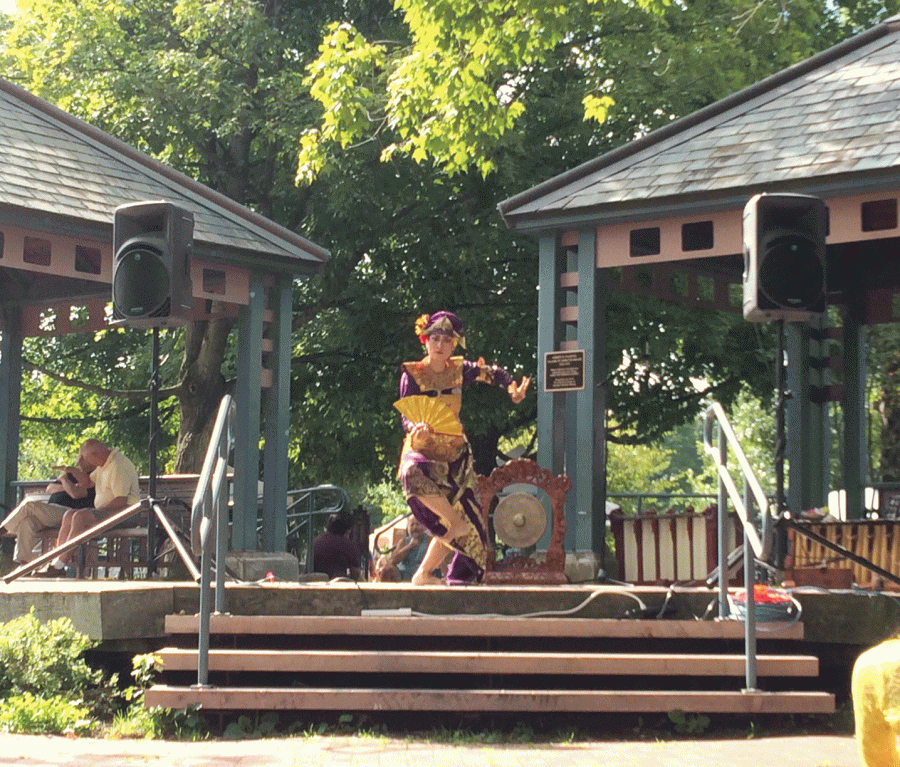Balinese Dance Brings Indonesian Culture to Hamilton
This past Saturday morning on the Village Green, Hamilton children ate locally grown fruit and homemade treats while enjoying a traditional Indonesian performance.
Visiting Assistant Professor Peter Steele of the music department specializes in Indonesian music and is working to bring some of the lively culture to Hamilton. On the morning of Saturday, September 6, Steele and his fellow performers showcased a variety of traditional Balinese music and gamelan dance to incite interest among the local community.
The first performance featured long-time Balinese dancer Shoko Yamamura dressed in an elaborate purple and gold costume. Her mix of slow, isometric poses and subtle, energetic movements mimicked the effect of the Balinese bells playing in the background. Although she danced alone on stage, her controlled movements and engaging facial expressions kept the audience captive. Her active eyes and tight-lipped smile told more complex stories as she moved, revealing to the audience experiences of fear, conflict, resolution and enchantment.
The second Balinese dancer used the same theatrics and subtle gestures as the opener but created a more peaceful, yet mysterious atmosphere. Hers, a more traditionally feminine Balinese routine, moved slowly, though the prolonged expression kept the audience watching, fearful they would miss something, an important piece of the story, if they looked away.
The third act turned from dance to a musical performance. Peter Steele and his accompanist performed two songs on the gender wayang – a xylophone-like arrangement of bells hit with mallets. Such music is typically used to accompany shadow-puppet plays in Indonesia. The musicians looked off into the distance as they played effortlessly in unison. The mark of a skilled musician, their ease and fluency made it seem they were speaking a language of their own.
The audience sat watching the two musicians with admiration. At times the bells seemed to be out of tune, but the subtle twang of the too-close notes was no accident. Rather, the lack of harmony kept the listener invested, capable of noticing the subtle differences, conscious of the two halves of the conversation. Steele and his accompanist were speaking effortlessly across cultures.
As the group began their final performance, featuring dancers and a trio of musicians, the 11:00 p.m. church bells on the Village Green began to compete with those of the gender wayang. This final performance was a traditionally male warrior dance called “Baris” and differed largely from the feminine performances. Both dancers took on a wider stance, slowly
reacting to the kendang drum and the gangsa bells.
Yamamura, the wife of Professor Steele, has perfected both gender performances and the theatrics of Balinese gamelan dancing. This semester she is working to share her expertise with the Hamilton community by offering children’s classes at the Hamilton Center for the Arts and Colgate-friendly classes in room 210 of James C. Colgate Hall at 6:30 p.m. on Mondays.







